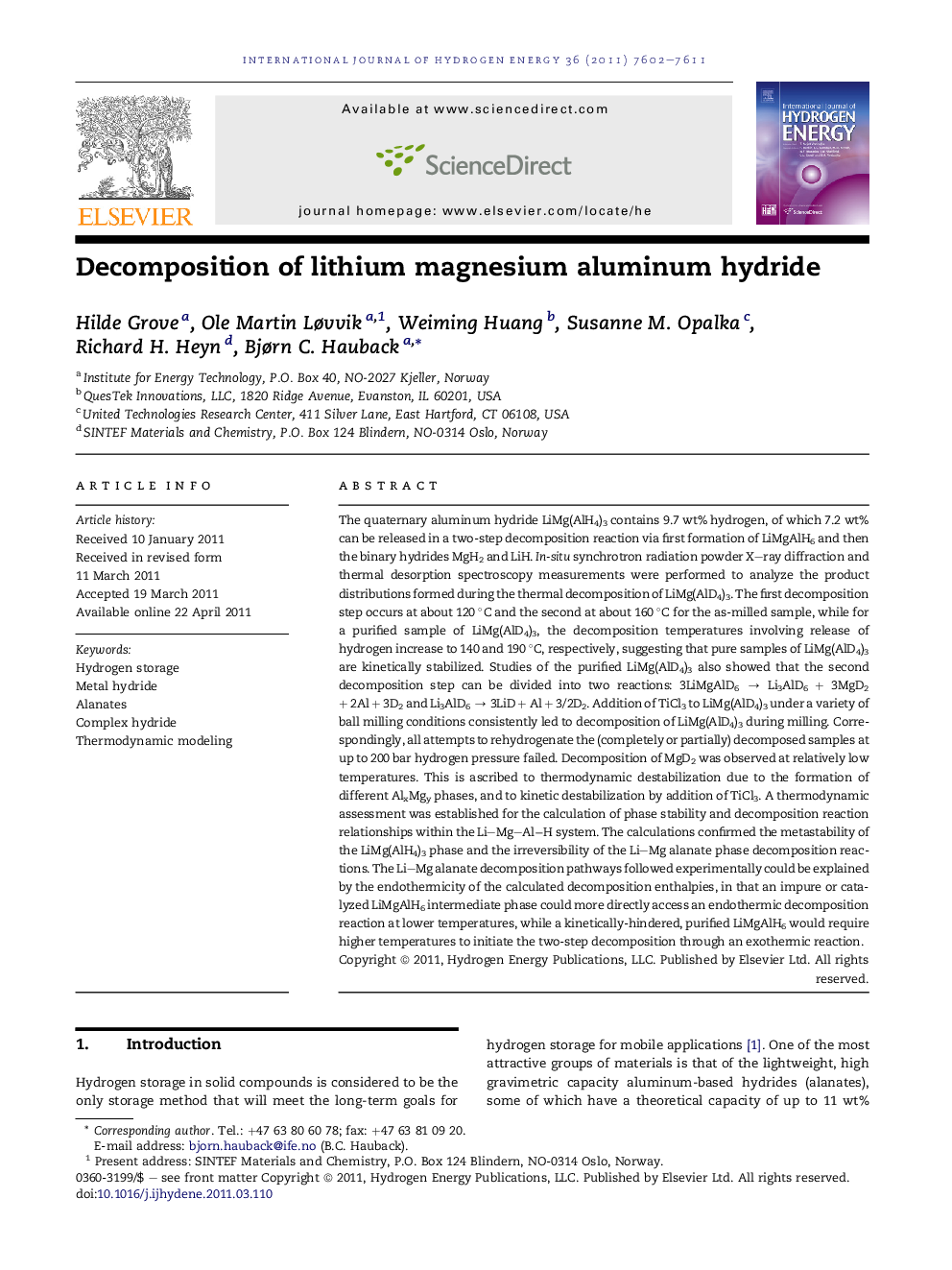| کد مقاله | کد نشریه | سال انتشار | مقاله انگلیسی | نسخه تمام متن |
|---|---|---|---|---|
| 1279287 | 1497580 | 2011 | 10 صفحه PDF | دانلود رایگان |

The quaternary aluminum hydride LiMg(AlH4)3 contains 9.7 wt% hydrogen, of which 7.2 wt% can be released in a two-step decomposition reaction via first formation of LiMgAlH6 and then the binary hydrides MgH2 and LiH. In-situ synchrotron radiation powder X–ray diffraction and thermal desorption spectroscopy measurements were performed to analyze the product distributions formed during the thermal decomposition of LiMg(AlD4)3. The first decomposition step occurs at about 120 °C and the second at about 160 °C for the as-milled sample, while for a purified sample of LiMg(AlD4)3, the decomposition temperatures involving release of hydrogen increase to 140 and 190 °C, respectively, suggesting that pure samples of LiMg(AlD4)3 are kinetically stabilized. Studies of the purified LiMg(AlD4)3 also showed that the second decomposition step can be divided into two reactions: 3LiMgAlD6 → Li3AlD6 + 3MgD2 + 2Al + 3D2 and Li3AlD6 → 3LiD + Al + 3/2D2. Addition of TiCl3 to LiMg(AlD4)3 under a variety of ball milling conditions consistently led to decomposition of LiMg(AlD4)3 during milling. Correspondingly, all attempts to rehydrogenate the (completely or partially) decomposed samples at up to 200 bar hydrogen pressure failed. Decomposition of MgD2 was observed at relatively low temperatures. This is ascribed to thermodynamic destabilization due to the formation of different AlxMgy phases, and to kinetic destabilization by addition of TiCl3. A thermodynamic assessment was established for the calculation of phase stability and decomposition reaction relationships within the Li–Mg–Al−H system. The calculations confirmed the metastability of the LiMg(AlH4)3 phase and the irreversibility of the Li–Mg alanate phase decomposition reactions. The Li–Mg alanate decomposition pathways followed experimentally could be explained by the endothermicity of the calculated decomposition enthalpies, in that an impure or catalyzed LiMgAlH6 intermediate phase could more directly access an endothermic decomposition reaction at lower temperatures, while a kinetically-hindered, purified LiMgAlH6 would require higher temperatures to initiate the two-step decomposition through an exothermic reaction.
Journal: International Journal of Hydrogen Energy - Volume 36, Issue 13, July 2011, Pages 7602–7611